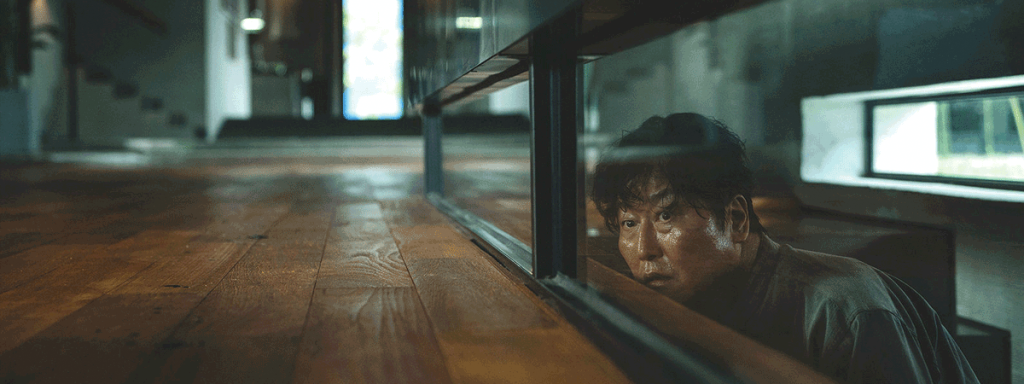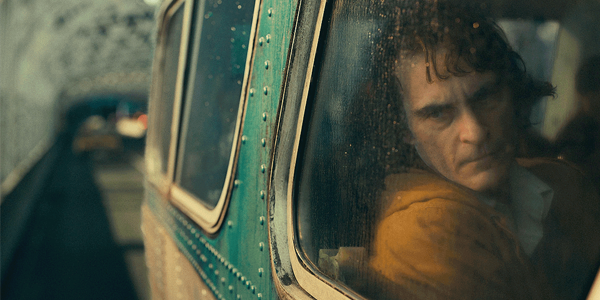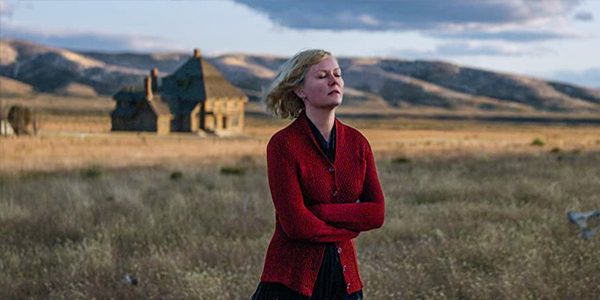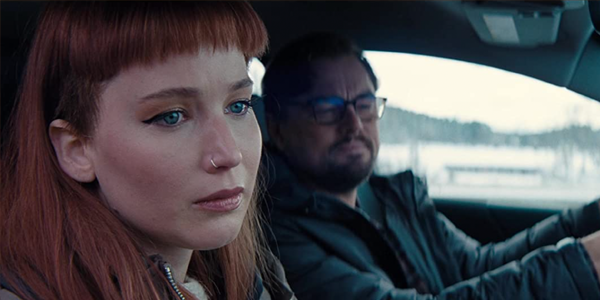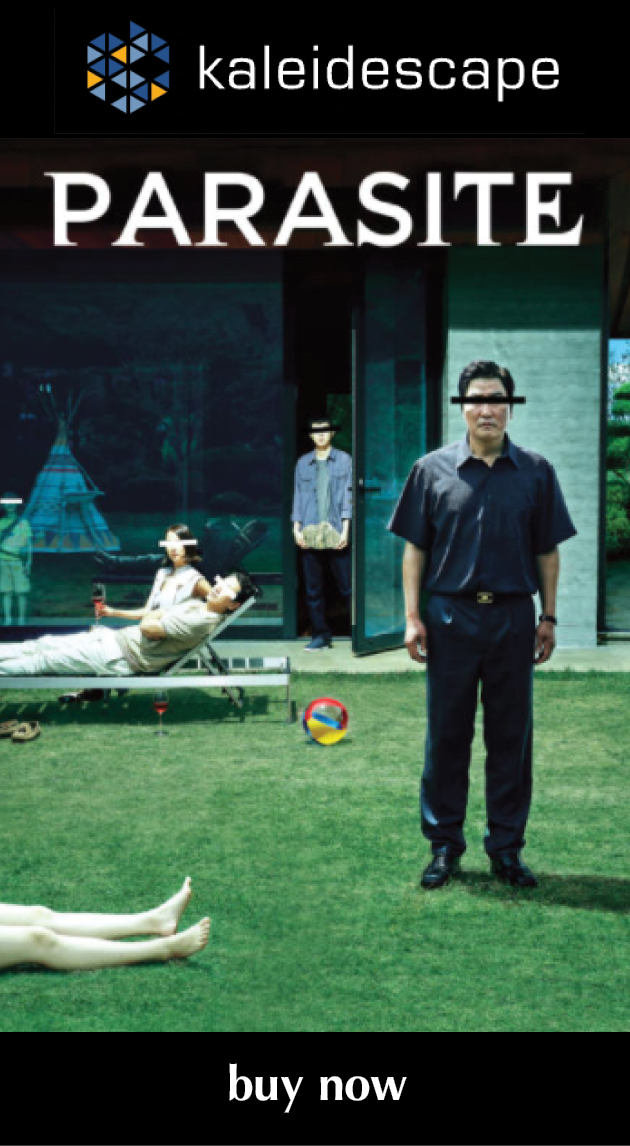recent reviews
Sign up for our monthly newsletter
to stay up to date on Cineluxe
Kaleidescape offers a sumptuous 4K HDR presentation of this 2020 Best Picture recipient
by Dennis Burger
January 15, 2020
Three thoughts occurred to me pretty much simultaneously as I sat and reflected upon Bong Joon-ho’s Parasite as the closing credits scrolled by. Thought the first: How on earth am I going to say anything meaningful about this film without spoiling the entire experience? I’ve never been one for rehashing plots, so it’s easy enough to shy away from giving away story beats or plot twists. What a film means and how well it’s made are generally far more interesting to me than the what-had-happened-was of it all.
With Parasite, though, the themes are so nuanced and ever-evolving that to go down that road would be to rob you of half the experience of watching the film. Just as you think you’ve figured out what Parasite is really about, it becomes about something subtly different, in a way that seems shocking at first but utterly inevitable in retrospect.
Thought the second: What a fascinating counterpart to Todd Phillips’ Joker this film is. It isn’t, I think, a spoiler to say that on the surface Parasite is about wealth inequality and class struggles, territory Joker explored as well. But while Phillips uses this thematic kick-starter primarily as fuel for one of the most enthralling character studies of the past few years, Bong uses it as the bedrock of a tightly scripted narrative that doesn’t merely encourage rapt attention—it downright demands it.
While Joker lives or dies by Joaquin Phoenix’ improvisation, and indeed feels like it could have been cut together a hundred different ways resulting in a hundred different films, Parasite by contrast comes across as a meticulous orchestration that hinges upon every piece of punctuation in the screenplay. Shorten one lingering glance or snip one line of dialogue, and I can’t help but feel as if it would be akin to playing Rush’s “YYZ” in 4/4 time.
Of course, comparisons between the two films can only go so far, as one is a drama based on a comic book and the other is a wholly original black comedy that morphs into farce before shifting gears into thriller territory before evolving into . . . well, something else altogether. And yet, I can’t help but see the two films as opposite sides of the same coin—perhaps due to the proximity of their release? Maybe. But it feels like there’s a deeper connection going on here, something both zeitgeisty and timeless.
In addition to surface thematic similarities, the films do share one other thing in common: Stunning cinematography and absolutely unimpeachable home video presentations. Kaleidescape’s UHD HDR release of Parasite wonderfully presents the 4K digital intermediate of the film, which was shot on Arri Alexa 65 cameras and captured at 6.5K resolution. The transfer doesn’t lean too heavily on intense highlights but has a high-contrast look that makes most use of its expanded dynamic range at the lower end of the value scale. Colors are simply sumptuous, but more than anything else, it’s cinematographer Hong Gyeong-pyo’s eye for framing and composition that makes Parasite such a visual feast.
Kaleidescape presents the film with your choice of 5.1 or stereo sound, both in Korean despite being labeled as English. There are no caption options, as subtitles are baked into the transfer and positioned within the 2.39:1 frame.
There will be some controversy, I’m sure, over the fact that Universal decided to release the film without its original Atmos soundtrack here in the U.S. This is true of both its digital release now as well as its disc release (Blu-ray only, no UHD) later in the month. Interestingly, other local distributors (The Jokers Films in France, for example) are delivering Parasite with its object-based audio intact, and I’ll admit even I’m intrigued to hear what that sounds like, because the surround mix is as bold and cheeky as the film itself. Aggressive pans from the surround soundstage into the front channels are employed frequently, though not gratuitously, to redirect the viewer’s attention and extend the fabricated reality of the film out into the room.
If I had to speculate about why we’re not getting Atmos in the U.S. (and let’s be clear here, this is nothing more than speculation), I would guess that the 5.1 option we’ve received is a new nearfield mix intended for the relatively more intimate confines of home theaters or media rooms. Whatever the reality, it’s hard to complain about such a brilliantly crafted audio experience, and it does up-mix quite nicely into Atmos, if that’s your preference.
Thought the third: If Parasite wins a condescending Best International Feature Film Oscar and gets snubbed for Best Picture, I’m going to pitch a hissy. (And I say this as someone who normally puts as much stock in the Academy Awards as I do the serving-size suggestions on a box of Cheez-Its.) This isn’t the sort of token foreign film Hollywood trots out every year and then dislocates its collective shoulders in an effort to pat its own back for patronizingly celebrating a film with subtitles. It’s a universally applicable work of art whose themes resonate across cultural boundaries.
It’s also one of those rare films that manages to be both poignant and approachable. It asks tough questions without offering pandering answers and it somehow manages to not be even slightly opaque in the process. Quite frankly, if it doesn’t win Best Picture, I can only assume it’s because the Academy jealously recognizes that few modern American directors would have had the courage to make this film, at least not in quite this way.
Dennis Burger is an avid Star Wars scholar, Tolkien fanatic, and Corvette enthusiast who somehow also manages to find time for technological passions including high-end audio, home automation, and video gaming. He lives in the armpit of Alabama with his wife Bethany and their four-legged child Bruno, a 75-pound American Staffordshire Terrier who thinks he’s a Pomeranian.
PICTURE | Kaleidescape’s UHD HDR release wonderfully presents the 4K digital intermediate of the film, with a transfer that doesn’t lean too heavily on intense highlights but has a high-contrast look that makes most use of its expanded dynamic range at the lower end of the value scale
SOUND | The 5.1 surround mix is as bold and cheeky as the film itself. Aggressive pans from the surround soundstage into the front channels are used to redirect the viewer’s attention and extend the fabricated reality of the film out into the room.
© 2023 Cineluxe LLC


